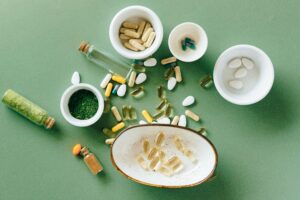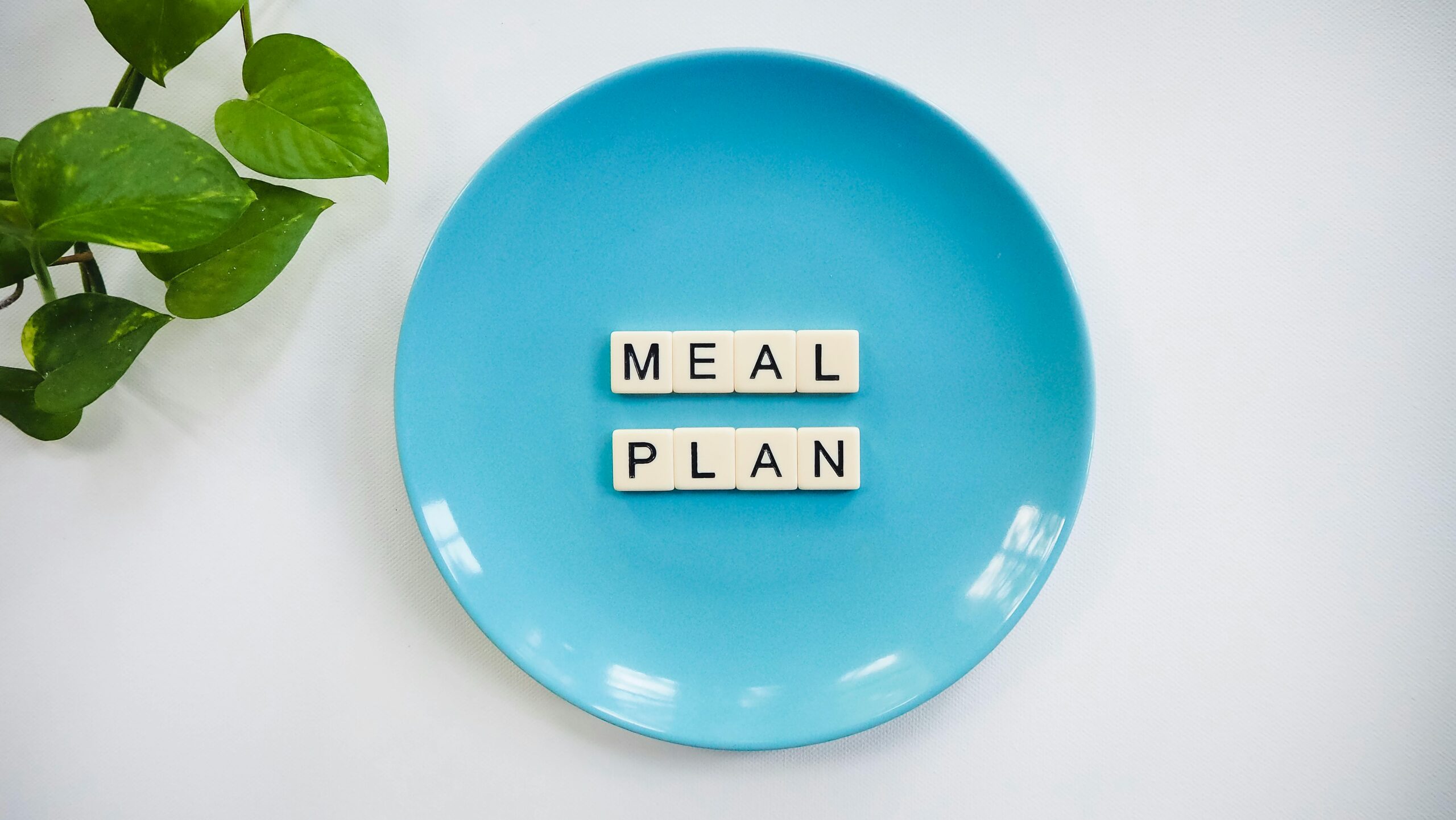The Ultimate Guide to Natural Diabetes Support
Introduction
Type 2 diabetes is one of the most pressing health challenges of our time, and millions worldwide are seeking safer, more natural ways to manage blood sugar. While conventional medicine remains essential, science increasingly shows that certain supplements, foods, and daily habits can provide meaningful support. This guide brings together peer-reviewed research, expert opinions, and actionable strategies to help you make informed choices about natural diabetes support.
Supplements That Show Promise in Diabetes Support
Several natural supplements have been studied for their impact on blood sugar, insulin sensitivity, and metabolic health. Below is a breakdown of the most researched options and how they may benefit people with type 2 diabetes.

- Cinnamon – More than just a spice, cinnamon has been studied for its potential to lower fasting blood sugar and improve insulin sensitivity. A Cochrane review found mixed but promising results, suggesting that certain types of cinnamon (like Cinnamomum cassia) may reduce glucose levels modestly. Incorporating cinnamon into meals or teas may offer gentle support, especially when paired with a healthy diet.
- Berberine – A compound found in plants like goldenseal, berberine has been compared to metformin for its ability to improve insulin sensitivity and lower HbA1c levels. In a landmark Metabolism study, berberine significantly improved glucose control in patients with type 2 diabetes. Many practitioners consider it one of the most evidence-backed natural compounds for blood sugar support.
- Bitter Melon – Also known as Momordica charantia, bitter melon has long been used in traditional medicine for diabetes. Clinical studies, such as one published in the Journal of Ethnopharmacology, show that bitter melon capsules can modestly improve glycemic control. Its active compounds mimic insulin, helping glucose enter the cells more effectively.
- Magnesium – Magnesium plays a crucial role in how your body processes glucose. Low magnesium levels are strongly linked with insulin resistance. According to research from the Harvard School of Public Health, diets high in magnesium-rich foods like leafy greens, nuts, and seeds are associated with a lower risk of type 2 diabetes. Supplementation may be particularly helpful for individuals with documented deficiencies.
- Vitamin D – Beyond bone health, vitamin D influences insulin sensitivity and inflammation. Several studies suggest that people with low vitamin D levels have a higher risk of developing type 2 diabetes. Correcting a deficiency through safe sun exposure or supplementation can be an easy but impactful step in supporting metabolic health.
- Alpha-Lipoic Acid (ALA) – ALA is a potent antioxidant that has been studied for its ability to reduce oxidative stress in diabetics. Some clinical evidence shows it can improve insulin sensitivity and may help relieve symptoms of diabetic neuropathy. While not a standalone treatment, it’s a valuable adjunct for those seeking to protect nerve health alongside glucose control.
- Chromium – Chromium is a trace mineral involved in carbohydrate and fat metabolism. Supplementation may improve insulin action in some people, though results are inconsistent. Still, for individuals with chromium deficiency, supplementation could enhance glucose regulation and complement other dietary strategies.
“We are learning that natural compounds like berberine and bitter melon, when combined with proper medical care, can make a measurable difference in glucose regulation. The key is not replacing standard treatments, but supporting them.”
Dietary Patterns and Foods for Natural Diabetes Support
What you eat has a direct impact on blood sugar regulation and insulin sensitivity. Certain dietary patterns and specific foods have been consistently shown to improve outcomes for individuals with type 2 diabetes.
- High-Fiber Diets – Fiber slows the absorption of sugar and helps improve glycemic control. According to a Lancet meta-analysis, higher fiber intake is linked to a significantly reduced risk of type 2 diabetes. Practical steps include eating more beans, lentils, whole grains, and vegetables daily to stabilize post-meal glucose.
- Low Glycemic Index Foods – Not all carbs are created equal. Low-GI foods like oats, quinoa, and non-starchy vegetables cause slower rises in blood sugar compared to refined carbs. By swapping white bread and sugary cereals for whole oats or sprouted grain bread, individuals can better manage daily glucose fluctuations.
- Healthy Fats – Omega-3 fatty acids, found in fatty fish like salmon and sardines, reduce inflammation and may improve insulin sensitivity. Incorporating avocado, olive oil, and nuts provides satiety without spiking blood sugar, making them a cornerstone of a balanced diabetes-supportive diet.
- Plant-Based Eating – Diets centered around vegetables, fruits, legumes, and whole grains are consistently associated with lower diabetes risk. Research from the Harvard School of Public Health highlights that shifting towards a predominantly plant-based pattern improves long-term blood sugar regulation while supporting heart health.
- Intermittent Fasting – Emerging research suggests intermittent fasting may improve insulin sensitivity and reduce body weight, which directly benefits diabetes management. The Diabetes Prevention Program (NEJM study) showed that even moderate lifestyle changes involving reduced caloric intake had a major impact on diabetes prevention. For those considering fasting, starting with a simple 12:12 eating window can ease the transition.
- Probiotic and Fermented Foods – Gut health plays a major role in metabolic regulation. Fermented foods like yogurt, kefir, kimchi, and sauerkraut introduce beneficial bacteria that may improve insulin sensitivity. Though still an emerging area of research, the connection between gut health and diabetes support is promising and worth exploring through diet.
- Reducing Added Sugars – The most straightforward but critical step is minimizing added sugars. Sweetened beverages, processed snacks, and desserts contribute to insulin resistance over time. Replacing soda with sparkling water flavored with lemon or swapping candy for a handful of nuts can reduce daily sugar spikes and protect long-term metabolic health.
“Dietary choices are foundational. Even modest shifts toward whole foods, fiber, and plant-based patterns can profoundly reduce diabetes progression risk.”
Lifestyle and Daily Habits for Supporting Diabetes Naturally
Supplements and diet matter, but the habits you build into your daily routine can make or break blood sugar control. Lifestyle changes often amplify the benefits of nutrition and medication, creating a stronger foundation for long-term health.
- Regular Physical Activity – Exercise enhances the body’s ability to use insulin more effectively. Both aerobic activities (like brisk walking or cycling) and resistance training improve glucose uptake by the muscles. A position statement from the American Diabetes Association recommends at least 150 minutes per week of moderate activity. Even short bouts, like a 10-minute walk after meals, can significantly reduce post-meal glucose spikes.
- Stress Management – Chronic stress elevates cortisol, a hormone that increases blood sugar. Practices such as mindfulness meditation, breathing exercises, and yoga have been shown to lower stress and support metabolic balance. According to research in JAMA, stress-reduction interventions can modestly improve HbA1c in people with type 2 diabetes.
- Prioritizing Sleep – Sleep deprivation disrupts hormones that regulate appetite and insulin sensitivity. Studies from the National Institutes of Health show that people who sleep fewer than 6 hours per night are at increased risk of impaired glucose tolerance. Setting a consistent bedtime and creating a relaxing evening routine can help restore restorative sleep cycles, which are vital for diabetes support.
- Maintaining a Healthy Weight – Weight loss, even as modest as 5–10% of body weight, can improve insulin sensitivity and reduce the severity of type 2 diabetes. The landmark Diabetes Prevention Program trial demonstrated that lifestyle changes leading to moderate weight reduction cut the risk of developing diabetes by 58% in high-risk adults. Small, sustainable changes such as portion control and increased physical activity make the difference.
- Limiting Alcohol Intake – Excess alcohol can destabilize blood sugar and interfere with medications. Light-to-moderate consumption (such as a glass of red wine with meals) may have neutral or even slightly beneficial effects, but heavy drinking raises risks. The CDC advises people with diabetes to drink responsibly and only in moderation, if at all.
- Consistent Routine – Stability matters in blood sugar regulation. Eating meals at regular times, getting consistent sleep, and having a predictable activity schedule help the body’s circadian rhythms align with metabolic function. This predictability reduces unexpected glucose fluctuations and makes long-term management easier.
“Lifestyle factors like sleep, stress, and exercise aren’t just add-ons; they are central pillars in diabetes care. When combined with proper nutrition and medication, they can be transformative.”
Safety, Interactions, and Smart Use
Natural does not always mean safe. Therefore, you should add supplements carefully, one at a time, and coordinate with your clinician—especially if you use insulin or medications that lower blood sugar.
Potential Hypoglycemia
- Combining effects: Bitter melon, berberine, gymnema, and cinnamon can lower glucose. When you combine them with insulin or sulfonylureas, the risk of going low increases. Start with low doses, check glucose more often for the first 7–10 days, and keep fast-acting carbs nearby.
Medication Interactions
- Berberine: It may interact with drugs metabolized by CYP enzymes and P-glycoprotein. Because of that, you should review your full medication list with your clinician before you begin.
- Cinnamon (cassia): Cassia contains coumarin, which can be hepatotoxic in high amounts. Prefer culinary use or Ceylon (“true”) cinnamon and avoid mega-doses.
Organ Health Considerations
- Liver and kidneys: Choose reputable brands with third-party testing (USP, NSF, Informed Choice). If you have liver or kidney disease, you should avoid multiple new supplements at once and monitor labs as advised.
Special Populations
- Pregnancy and lactation: Safety data for most herbs remain limited. In these phases, food-first strategies and clinician-guided care take priority.
- Gastroparesis: Apple cider vinegar and GLP-1 medications can delay stomach emptying. If you experience nausea or fullness after small meals, you should discuss vinegar or fiber supplements with your clinician before use.
Quality & Dosing Discipline
- Label clarity: Avoid proprietary blends that hide exact doses. Track brand, dose, start date, and effects in a simple log so you and your clinician can review results objectively.
References: American Diabetes Association Standards of Care · Cochrane cinnamon review
Monitoring & Targets: Turn Choices Into Data
 When you track inputs and outcomes, you learn what actually works for you.
When you track inputs and outcomes, you learn what actually works for you.
Consequently, you can personalize your plan faster and stay safer.
Daily Checks
- Structured testing: Check fasting, then test 1–2 hours after your main meal. Record what you ate, whether you walked, and how you felt. You will quickly see which meals cause spikes and which meals keep you steady.
- Exercise “bookends”: A 10-minute walk before or after a higher-carb meal often lowers the post-meal peak meaningfully. Note your timing so you can repeat what works.
Quarterly Metrics
- Lab panel: Track A1c, lipids, kidney function, and liver enzymes per your clinician’s guidance. When possible, include time-in-range reports from CGM to capture daily patterns that A1c cannot show.
Functional Signals
- Energy and cravings: Improvements here usually arrive before lab changes. Because of that, you should log sleep quality, afternoon energy, and evening cravings each week.
Target Ranges (Individualized)
- Typical goals: Many care teams aim for tighter post-meal control and improved time-in-range while avoiding hypoglycemia. Your exact numbers must come from your clinician and your context.
References: ADA Standards of Care
30-Day Action Plan: One Lever Per Week
Small, repeatable wins compound. Therefore, change one primary lever each week, track results, and iterate.
Week 1 — Stabilize the Basics
- Breakfast template: Choose a fiber-forward, protein-rich option (e.g., Greek yogurt + chia + berries, or a veggie omelet with avocado). Repeat it daily to reduce decision fatigue.
- Movement anchor: Walk 10 minutes after the largest meal every day. Log post-meal readings on three days.
- Drink swap: Replace sweetened drinks with water, unsweetened tea, or black coffee. You will often see easier control within a week.
Week 2 — Add Fiber & Resistance
- Legume habit: Add one cup of beans or lentils daily. Because fiber blunts spikes, many people notice smoother curves by day four.
- Strength twice: Do two 20-minute sessions (body-weight or bands). Muscle acts like a glucose sponge, so this pays off quickly.
Week 3 — Trial One Supplement
- Pick one: With clinician approval, test berberine, bitter melon, or magnesium. Start low, take with meals, and check for hypoglycemia if you also use insulin or secretagogues.
- Meal swap: Replace one refined-carb dinner with a low-GI alternative (e.g., cauliflower rice bowl or legume-based pasta with a large salad).
Week 4 — Review & Personalize
- Keep the keepers: Review your logs. Keep the meals and habits that produced the flattest curves. Drop the frequent spikers.
- Decide on the supplement: Continue, switch, or stop based on your data and your clinician’s advice.
References: Diabetes Prevention Program (NEJM) · ADA Standards
Sample 7-Day Meal Plan (Template)
This template emphasizes fiber, protein, and minimally processed foods. You should adjust portions and carbohydrate targets with your clinician, especially if you use insulin or medications that can cause lows.

Day 1
- Breakfast: Greek yogurt, chia, walnuts, mixed berries.
- Lunch: Lentil soup, olive-oil side salad, sprouted grain toast.
- Dinner: Salmon, roasted broccoli, quinoa; vinegar dressing.
- Snack: Apple with almond butter.
Day 2
- Breakfast: Veggie omelet with avocado, tomatoes.
- Lunch: Chickpea salad bowl with greens, cucumber, feta, olives.
- Dinner: Chicken stir-fry over cauliflower rice.
- Snack: Plain kefir or unsweetened yogurt.
Day 3
- Breakfast: Steel-cut overnight oats with cinnamon and flax.
- Lunch: Tuna salad lettuce wraps; carrot sticks.
- Dinner: Turkey chili with kidney beans; side salad.
- Snack: Handful of mixed nuts.
Day 4
- Breakfast: Tofu scramble with peppers and spinach; berries.
- Lunch: Black bean and veggie burrito bowl (brown rice optional).
- Dinner: Baked cod, asparagus, mashed cauliflower.
- Snack: Cottage cheese with cucumber.
Day 5
- Breakfast: Protein smoothie (unsweetened almond milk, spinach, protein powder, chia, frozen berries).
- Lunch: Quinoa tabbouleh with chickpeas; lemon-olive oil dressing.
- Dinner: Tempeh or lean beef stir-fry; side of edamame.
- Snack: 85% dark chocolate square with walnuts.
Day 6
- Breakfast: Cottage cheese bowl with cinnamon and pumpkin seeds.
- Lunch: Sardine or salmon salad with arugula and capers.
- Dinner: Roast chicken, Brussels sprouts, barley (or skip barley for lower-carb).
- Snack: Pear with a slice of cheddar.
Day 7
- Breakfast: Savory oatmeal with egg, spinach, and mushrooms.
- Lunch: Hummus plate with raw vegetables and olives; side salad.
- Dinner: Shrimp and vegetable skewers; tomato-cucumber salad.
- Snack: Unsweetened cocoa with milk alternative.
Myths vs. Facts: Clearing Up Confusion
Myth 1: “Natural remedies can replace my medications.”
Fact: Natural strategies complement medical care; they do not replace it. Your clinician adjusts medications based on your data and safety considerations.
Myth 2: “All cinnamon works the same.”
Fact: Evidence is mixed and species matter. Ceylon (“true”) cinnamon has lower coumarin than cassia. Food-first use is safer than high-dose capsules. Cochrane review
Myth 3: “Fasting works for everyone.”
Fact: Some benefit, others do not. Medications, work schedules, and appetite cues vary. Start conservatively and coordinate with your clinician.
Myth 4: “Supplements don’t have side effects.”
Fact: They can cause GI upset, interact with drugs, and lower glucose excessively in combination. Because of that, you should add one change at a time and monitor.
Myth 5: “Carbs are always bad.”
Fact: Quality and quantity matter. High-fiber, low-GI carbs often perform well when paired with protein and vegetables. Lancet fiber analysis
Frequently Asked Questions
Can I use berberine while on metformin?
Sometimes, yes—under supervision. Interactions and GI effects can occur, so you should coordinate dosing and monitor for lows.
What’s a realistic first step?
Standardize breakfast, walk after dinner, and add one cup of legumes daily. These simple moves improve control for many people within weeks.
Do I need a CGM to succeed?
No, a meter is enough. However, CGM accelerates learning by revealing patterns. Use what you can access consistently.
Is apple cider vinegar worth trying?
For some, yes—diluted before higher-carb meals. If you have gastroparesis or take meds that slow gastric emptying, discuss it with your clinician first.
How do I avoid overwhelm?
Change one lever per week. Track, review, and keep what works. Because you move slowly, you move farther.
Supplement Comparison: What Each One Does Best
Use this quick comparison for high-level differences. Then, decide with your clinician which option fits your goals and medications.
| Supplement | Primary Support | Notable Considerations | Evidence Snapshot |
|---|---|---|---|
| Berberine | Fasting glucose, A1c, insulin sensitivity | GI upset; drug interactions possible | Metabolism (2008) |
| Bitter melon | Insulin-mimetic effects; post-meal control | Risk of lows with meds | J Ethnopharmacol (2011) |
| Cinnamon | Modest fasting glucose support | Cassia coumarin load; prefer food-first | Cochrane (2012) |
| Magnesium | Insulin action; deficiency correction | Choose tolerated forms (glycinate/citrate) | Harvard Nutrition |
| ALA | Neuropathy symptoms; insulin sensitivity | GI effects; coordinate with care team | Clinical use in neuropathy; mixed metabolic data |
Glossary: Terms You’ll See Often
- A1c: A three-month average of blood sugar. Lower numbers (individualized) generally indicate better control but must be balanced with hypoglycemia risk.
- Glycemic Index (GI): A measure of how quickly a food raises blood sugar. Low-GI foods rise more slowly.
- Insulin resistance: When cells do not respond effectively to insulin, the body needs more insulin to move glucose into cells.
- Time-in-range (TIR): The percentage of time glucose stays within target. Some people find TIR changes faster than A1c.
Conclusion: Building a Practical, Natural Support Plan
Natural diabetes support works best as a structured stack: choose a sustainable dietary pattern, layer in targeted supplements with evidence behind them, and anchor your routine with movement, quality sleep, and stress control. None of these replace medical care—rather, they amplify it. Start simple (fiber-rich meals, a daily walk, one well-chosen supplement), measure results with your care team, and iterate based on data from your labs and glucose readings.
quality sleep, and stress control. None of these replace medical care—rather, they amplify it. Start simple (fiber-rich meals, a daily walk, one well-chosen supplement), measure results with your care team, and iterate based on data from your labs and glucose readings.
The most successful plans are boring by design: repeatable meals, predictable activity, regular bedtimes, and consistent follow-ups. Mastering those fundamentals outperforms chasing hacks. When you’re ready, build on that base with carefully selected add-ons like berberine or bitter melon—introduced one at a time and monitored for effect and safety.
References
- Harvard T.H. Chan School of Public Health — Nutrition & Diabetes
- Leach MJ. Cinnamon for diabetes mellitus — Cochrane Review (2012)
- Yin J, Xing H, Ye J. Berberine in type 2 diabetes — Metabolism (2008)
- Dans AM, et al. Bitter melon RCT in type 2 diabetes — Journal of Ethnopharmacology (2011)
- Reynolds A, et al. Carbohydrate quality & health — The Lancet (2019)
- Knowler WC, et al. Diabetes Prevention Program — NEJM (2002)
- American Diabetes Association — Standards of Care in Diabetes
- Colberg SR, et al. Exercise and Type 2 Diabetes — ADA Position Statement (Diabetes Care)
- JAMA — Mind–body/stress-reduction interventions and glycemic outcomes (review context)
- National Institutes of Health — Sleep & metabolic health (overview resources)
- CDC — Alcohol and Diabetes Guidance
Related Articles You May Enjoy
Author Bio
Omar Aljaff is the founder of Remedy Verified, a health platform exploring alternative remedies backed by research. Passionate about blending tradition with science, he writes about natural approaches that empower people to take control of their health journey.
Disclaimer
⚠️ Disclaimer The information provided in this article is for educational purposes only and is not intended as medical advice, diagnosis, or treatment. Natural remedies, supplements, and lifestyle changes may affect individuals differently. Always consult a qualified healthcare professional before making any changes to your diet, medications, or health routine—especially if you have an existing medical condition, are pregnant, or are taking prescription drugs. Remedy Verified does not provide medical services, and the content shared here should not be considered a substitute for professional medical guidance. Use of this website and its information is at your own risk.